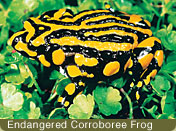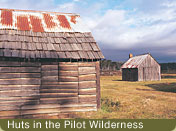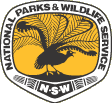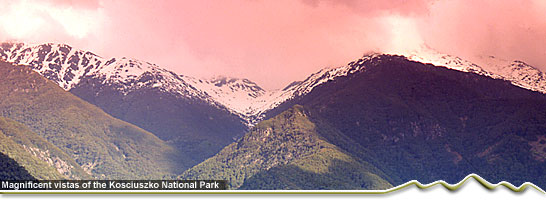Kosciuszko is one of Australia’s great national parks
The park encompasses Mt Kosciuszko (the highest mountain in Australia at 2229m), the headwaters of the famous Snowy River, spectacular limestone caves and all New South Wales alpine resorts.
The park covers over 690,000 hectares of diverse landscapes. The highest parts of the park are stunning snow country where the alpine herbfields have spectacular displays of flowers in summer.
In the west, the dramatic steep fall from the highest peaks extends down through pockets of cool temperate rainforest to drier forests and woodlands on the lower slopes. To the east are sub-alpine woodlands of snowgums giving way to tall forests of alpine ash and mountain gum.
In the dry rugged areas along the lower Snowy River, woodlands of native cypress pine and white box are found. To the north are extensive treeless plains formed mainly by cold air drainage.
Rare plants and animals inhabit the park
Kosciuszko’s alpine and sub-alpine areas contain plant species found nowhere else in the world. The park is also home to rare animal species such as the tiny mountain pygmy-possum and the corroboree frog.
Aboriginal people have continuing connections with the park
Aboriginal people lived on the open plains, river valleys and foothills of the mountains for tens of thousands of years. On the highest mountains, important spiritual ceremonies were attended by many groups from south-eastern New South Wales, north-east Victoria and west of the mountains.
The mountains also form an important part of a complex network of ceremonial, song and story lines which run across the country. While the whole of the landscape is important to Aboriginal people, areas within Kosciuszko National Park continue to have special significance.
The park offers a wide range of outdoor experiences
Today visitors enjoy the spectacular mountain scenery and a wide range of outdoor experiences. These range from activities around the developed resort areas through to self-reliant recreation in wilderness.
Weather in the alps can change quickly any time of
year. Plan ahead. Think before your trip about weather, equipment and safety. Even during the summer months, carry warm waterproof clothing. If leaving marked trails, know how to use a map and compass.
Car Touring
Roads winding through the mountains and across the open plains offer a variety of driving experiences for cars, coaches, motor-homes and motorbikes. Stretch your legs at one of the many scenic roadside picnic areas.
Walking
Kosciuszko’s walking tracks will take you past crystal-clear streams, glacial lakes, deep gorges, high peaks, historic huts and other culturally significant sites. All year round you will see a variety of native flora and fauna such as wallabies, echidnas, wombats, crimson rosellas and gang-gang cockatoos. Free publications are available at the visitor centres for details.
Camping
Spend a night in Kosciuszko National Park. Camping in designated areas helps protect the very things you have come to enjoy. There are many scenic camping sites with basic facilities. For those venturing into wilderness areas, make sure you are fully prepared. Publications are available at the visitor centres.
|
Fishing
Trout fishing is popular in the region’s cool mountain streams and deep dams. Fishing licences are required and are available at local stores, selected National Parks Visitor Centres and NSW Fisheries. Due to spawning, no fishing is permitted in rivers and streams fromthe June long weekend to the October long weekend.
Cycling
Scenic management trails open to cyclists run through most areas of the park. Do not follow these trails onto private property without permission. Bicycles are not permitted on walking tracks.
Snowsports
All New South Wales alpine resorts are within the Park. In winter, many visitors head for the resorts of Perisher Blue, Charlotte Pass, Thredbo and Selwyn for snowplay and a variety of snowsports.
There are extensive networks of cross-country ski trails and touring routes around the resorts which cater for varying levels of experience. Skiers and boarders wishing to leave the resort areas should be fully prepared and able to use a map and compass. Publications on preparation and skills required are available at the visitor centres and local cross-country ski outlets.
Another option is snowshoeing to one of many scenic locations around the resort areas.
Other activities
Activities include guided walks, rafting, caving, canoeing, kayaking and moutaineering adventures. Wakeboarding, waterskiing, sailing and swimming are also popular on the lakes and dams outside the park. Contact Snowy Hydro on 1800 623 776 for power station tours. For a taste of the drover’s life, horse riding is allowed in some areas.
NPWS Visitor Information Centres
Snowy Region Visitor Centre
Kosciuszko Road, Jindabyne
Tel - 02 6450 5600
Email - srvc@npws.nsw.gov.au
Khancoban Information Centre
Scott Street, Khancoban
Tel - 02 6076 9373
Tumut Region Visitor Centre
The Old Butter Factory, 5 Adelong Road, Tumut
Tel - 02 6947 7025
Email - tumutrvc@npws.nsw.gov.au
Web - www.tumut.nsw.gov.au
Yarrangobilly Caves Visitor Centre
Yarrangobilly Caves, Snowy Mountains Highway
Tel - 02 6454 9597
NPWS Website - www.nationalparks.nsw.gov.au
|




